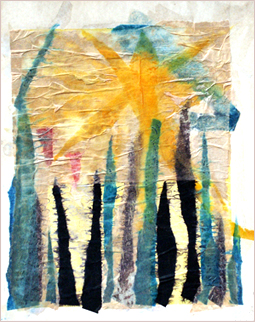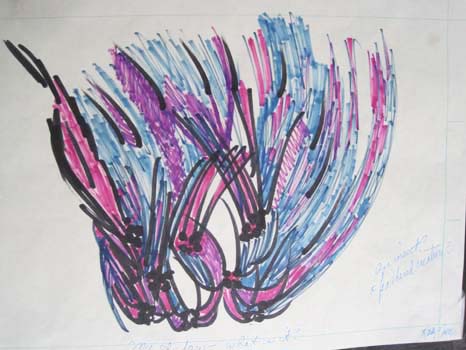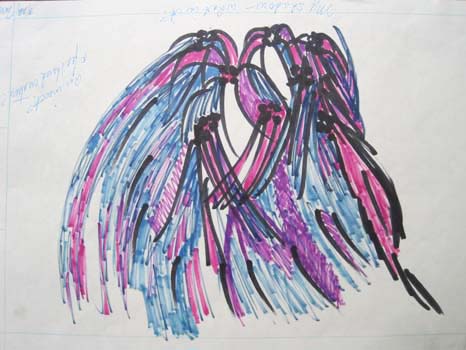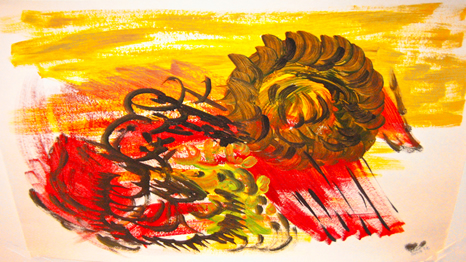

 foto: Peter Kahan. |
Images from the Unconscious At one of my first all-day workshops at the Jung Foundation I met Edith Wallace, who had trained with C.G. and Emma Jung in Zurich. She said each of us carries a personal myth and invited us to spend the morning looking for our own story and writing it down. After lunch we were to tear colored tissue paper into small pieces and paste them on a white cardboard: our myth in collage. Like the others, I started, stopped and began again several times, finally producing three different collages, which told me nothing. With time to make one more, suddenly my hands seemed to know what to do. First a huge yellow sun appeared at the top, above a forest of blue and black tree trunks with no branches. One "tree" towered high over the others, rising to the top of the paper and melting into the sun. It was tall and black, with a bright blue top that was bent at an angle over the others as if to protect them. The black forest reminded me of a scary photograph I'd seen as a child, in a book called The Poet's Camera. A dark and terrifying wood with gnarled and twisted trees, shadowy in the early evening light, whose branches seemed to writhe and reach toward the viewer. The caption read: "Enter these enchanted woods, ye who dare!" I didn't know it then, but this first experience of artwork from the unconscious marked the beginning of decades of discovery.
Here's a recent discovery in my ongoing adventures with the Unconscious. Some 4 years ago I painted a series of drawings with magic markers for a week. The one below I titled "My Shadow--what is it?" Then added, "An insect? A feathered creature?"
Two years ago I found it among a stack of papers and tacked it up on the hall wall. Then, after a few months of passing it all the time, I turned it upside down, as below.
Only yesterday I looked at it, suddenly riveted, and saw for the first time the Masculine and the Feminine, embracing each other. How long it takes for the message to come through!
Why did my problems express themselves in images? As I'd often done before, I turned to James Hillman's complex reasoning for clarification. In The Thought of the Heart he writes that "The world is a place of living images, and our hearts are the organs that tell us so." OK. Then why don't I listen to the heart with more respect and less fear of being wrong? Hillman answers with another image: "Crucial to the heart of the lion is that it believes…its thought appears in the world as project, desire, concern, mission. Thinking and doing together…(The lion's) thought does not appear as thought because it emanates like the sun into the world…" His words called me to a new possibility, obscure but inviting. He goes on to say that the lion's "task of consciousness lies in recognizing…that what it experiences as life, love and the world" is really within itself. Here was my new task, my new direction: to turn away from the search for answers I sought everywhere "out there," in books and people, and look for them in myself. The lion became my new image. That summer, while attending a Jungian conference in Assisi, I met the gaze of a sorrowful lion outside a 12th century church, high over the valley. Its two front paws were crossed in resignation. The look on its face intimated a thousand years of watching the world suffer. Back home, I painted swathes of bright reds and yellows. As they poured from my brush I began to see a colorful lion at rest.
|


